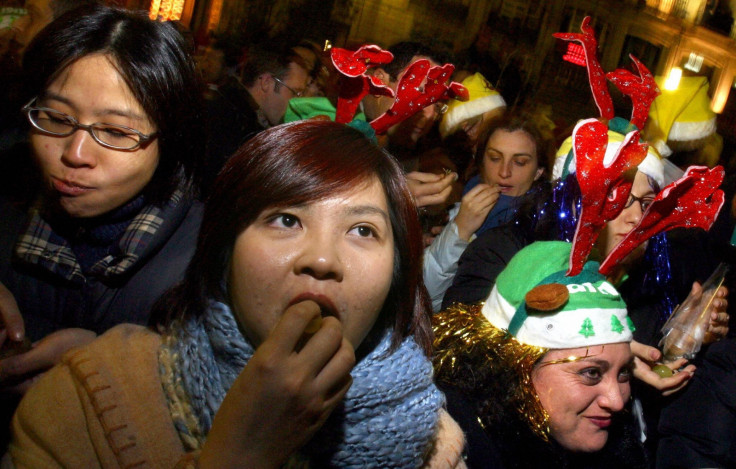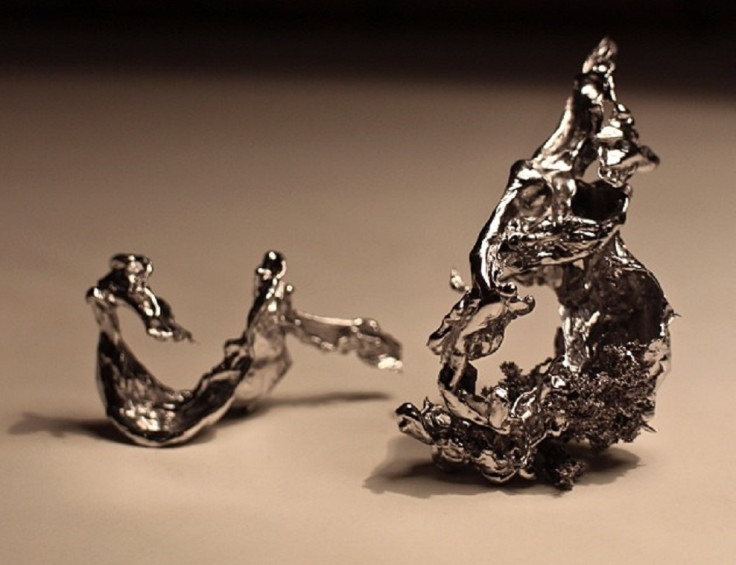New Year's Eve 2015: Unusual traditions and customs to celebrate a new year around the world

Extravagant firework displays are to be expected on New Year's Eve to bring in 2015, across the cities of London, Sydney, Paris and Dubai.
Many will celebrate with champagne and dancing when the clock strikes midnight, but communities around the world celebrate the New Year in a variety of different ways – from bear costumes to smashing plates for good luck.
IBTimes UK looks at New Year's Eve traditions and customs that have continued over hundreds of years into the 21<sup>st century.
Spain
The Twelve Grapes is a Spanish tradition that dates back to around 1895, but became established in 1909. In December that year, vine growers in Alicante popularised the custom to sell larger amounts of grapes from a good harvest.
The tradition consists of eating a grape with each bell strike at midnight on 31 December, to encourage a year of prosperity. In some areas, the custom is believed to ward away evil.
Ecuador
In Ecuador at the stroke of midnight, effigies are lit in the tradition of the burning of the "año viejo" – the old year. It marks the symbolic cleansing of any negatives of the previous year and for extra good luck, some even jump the flames 12 times for each month.
The tradition is said to date back to an 1895 yellow fever epidemic, as the bodies of victims were burned.

Denmark
Friends and neighbours smash plates and leave them outside front doors as a sign of affection and to ward off bad spirits for the New Year. It is a measure of popularity to find a pile of broken crockery outside your front door.
The Danes also prepare an evening meal on New Year's Eve, which ends with a cone-shaped cake known as a Kransekage, decorated with flags and fire crackers.
Russia
New Year's Eve is significant for Russians as under Communist rule in the 20<sup>th century, religious holidays – including Christmas – were banned. The New Year was a non-religious substitute for the seasonal celebrations and it continues to be popular to this day.
One custom is to write a new year wish on a piece of paper, set it alight and drop the ashes into your champagne glass – and then drink the contents.

Romania
A tradition in rural parts of Romania is to wear bear costumes or animal furs and to dance in the street to ward off evil. According to the Associated Press, people in urban areas are increasingly adopting the custom, as the economic downturn in the country pushes performers in the cities to dance for money.
Chile
In several Chilean communities, including the city of Talca, people celebrate the New Year with their deceased family members by holding candlelit ceremonies in graveyards. Midnight masses are held every year, to include all family members in the celebrations.
Japan
The Japanese have a custom of sending New Year's Day cards, called nengajo, to their friends and relatives – in a tradition similar to the western custom of sending Christmas cards. Originally, the tradition existed for families and friends living far apart to send their greetings.
It is customary not to send the cards when one has had a death in the family during the year. In this case, a family member sends a "mourning postcard", a mochū hagaki, to inform friends and relatives they should not send New Year's cards out of respect for the deceased.

Finland
One New Year's Eve, it is customary for the Finnish to carry out molybdomancy, a technique of divination using molten metal. Tin is melted on a stove and dropped into water, and the resulting shape is interpreted as an omen for the future, or is rotated in candlelight to create shadows which are interpreted.
In Finland, shops sell small bullions in the shape of a horseshoe for this tradition. A bubbly surface is said to refer to money, while a fragile or broken shape represents misfortune.
Belarus
In Belarus, a popular game is played to decipher which women will marry first. Each woman sits in front of a pile of corn and a rooster is placed in the middle. Whoever's corn the rooster chooses is said to be the first to wed.
© Copyright IBTimes 2025. All rights reserved.






















